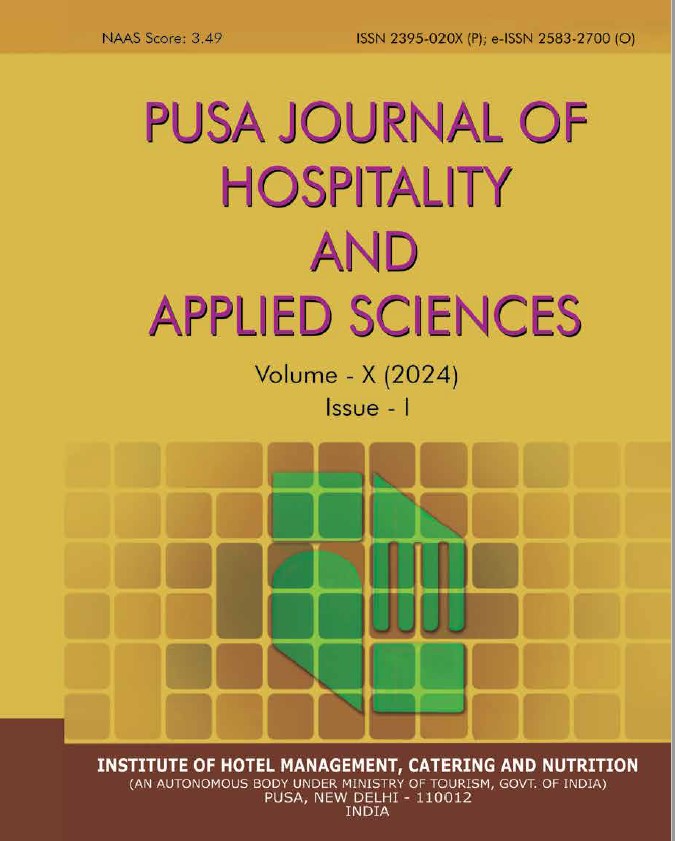Application Of Six-Sigma Techniques To Human Capital Management In Hotels#
Keywords:
Six-Sigma, Strategic HRM, Human Capital, Intangible, Analytic, AlignmentAbstract
Background: Six-Sigma is a quality improvement strategy that provides a clear roadmap for organizations to deliver nearly perfect products and services. In an increasingly knowledge intensive and global economy, superior management of human capital- the skills, talents and knowledge of an organisation’s employees is arguably the only sustainable source of competitive advantage for an organisation. Objective: To assess the effectiveness of Six-Sigma and examine its impacts on various performance measures in hotels, seeking for what values and benefits it brings to improve the overall performance of human capital. Methodology: The survey was circulated to a panel of prominent academics and Hotel professionals in the field of quality management to capture their feedback as a part of a pilot survey. The respondents were asked to rank the 10 key drivers needed for the successful deployment of Six-Sigma on a scale of 1-5 Results: Only 31% of these hotels were actively involved in a documented Six-Sigma project. Four hotels are planning to implement Six-Sigma in the near future. The results of the study also revealed that the most commonly used Six-Sigma metrics is the number of customers’ complaints. This metric is followed by defect rate and process capability. Human Capital Performance scores give an indication that hotels implementing Six-Sigma have achieved more benefits as compared to other hotels implementing other quality management programs. Conclusion: Six Sigma need to well propagate among hospitality sector so that its benefits can help improve customer satisfaction.
References
Andersson, R., Eriksson, H. & Torstensson, H. (2006). Similarities and Differences between TQM, Six Sigma and Lean. The TQM Magazine, 18(3), 282-296.
Ansari, A., Lockwood, D., Thies, E., Modarress, B. & Nino J., (2011). Application of Six-Sigma in Finance: A Case Study. Journal of Case Research in Business and Economics, (3), 1-13.
Antony, J. & Desai, D. (2009). Assessing the Status of Six-Sigma Implementation in the Indian Industry. Management Research News, 32(5), 413-423.
Antony, J. (2004). Six-Sigma in The UK Service Organizations: Result from a Pilot Survey. Managerial Auditing Journal, 19(8), 1006-1013.
Chuan, T. K. & Chakraborty, A. (2009). Room for Improvement: Hotel Giant Resorts to Six-Sigma to Improve Operations. Six-Sigma Forum Magazine, 9(1), 20-24.
Dahlgaard, J. J. & Dahlgaard-Park, S.M. (2006). Lean Production, Six-Sigma Quality, TQM and Company Culture. The TQM Magazine, 18(3), 263-281.
Egyptian Hotel Association. (2013). The Egyptian Hotel Guide 2013-2014, Egyptian Hotel Association 33ed.
Environments Scottsdale. (2015). AZ October 21.
Linderman, K., Schroeder, R.G., Zaheer, S. & Choo, A.S. (2003). Six-Sigma: A Goal Theoretic Perspective. Journal of Operations Management, (21), 193- 203.
Schroeder, R. G., Linderman, K., Liedtke, C. & Choo, A. S. (2008). Six-Sigma: Definition and Underlying Theory. Journal of Operations Management, 26, 536-554.
Shiau, Y. Ensuring Benefits of Six-Sigma at Starwood Six- Sigma Conference: Service and Transactional.
Snee, R. (2008). Six-Sigma Improves both Statistical Training and Processes. Quality Progress, 33(10), 68-72.
Snee, R.D. & Hoerl, R.W. (2003). Leading Six-Sigma. Englewood Cliffs, NJ : Prentice- Hall, ISBN: 0130084573.
Starwood Hotels (2007, October). Rubbing Customers the Right Way. Business Week.




